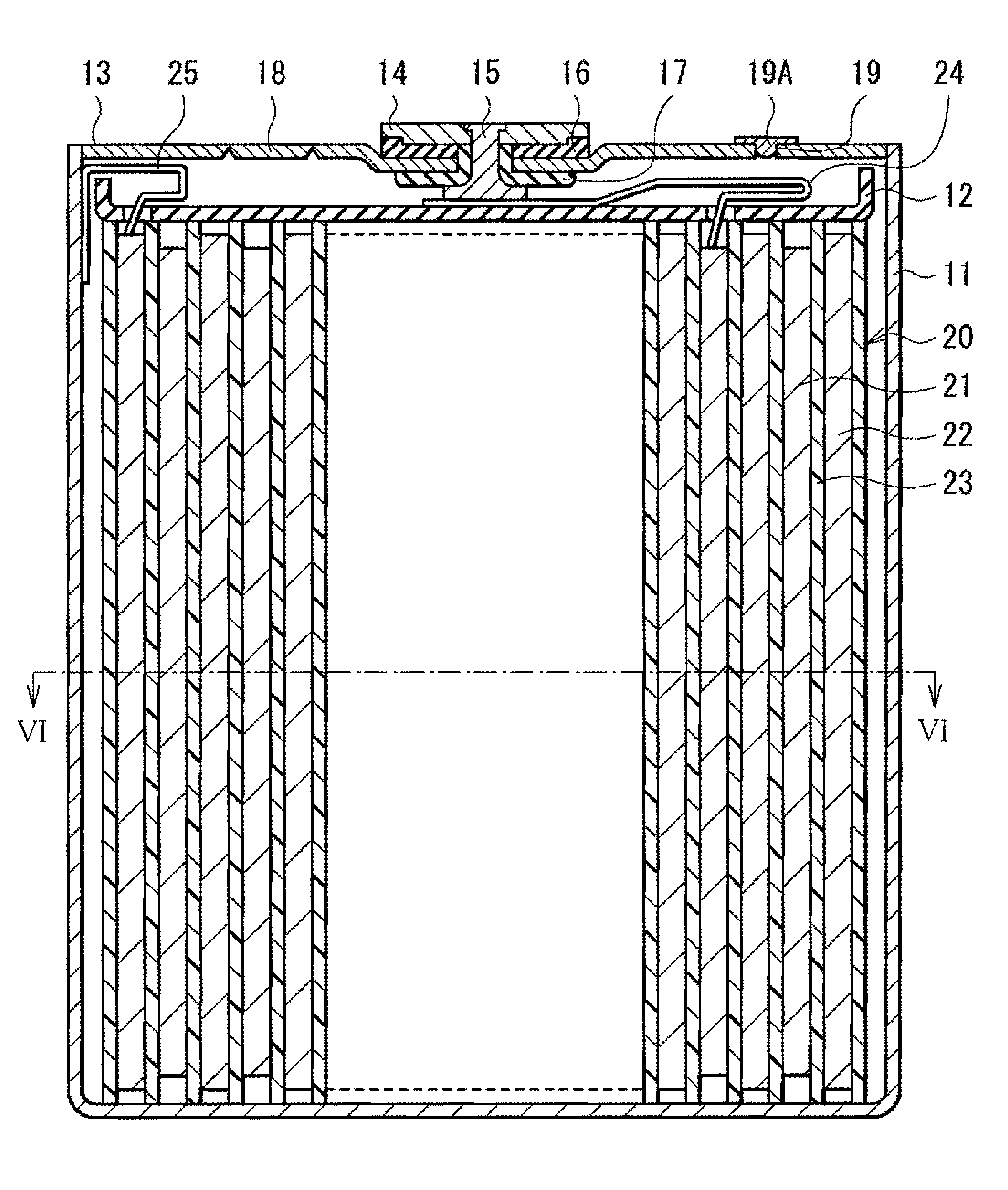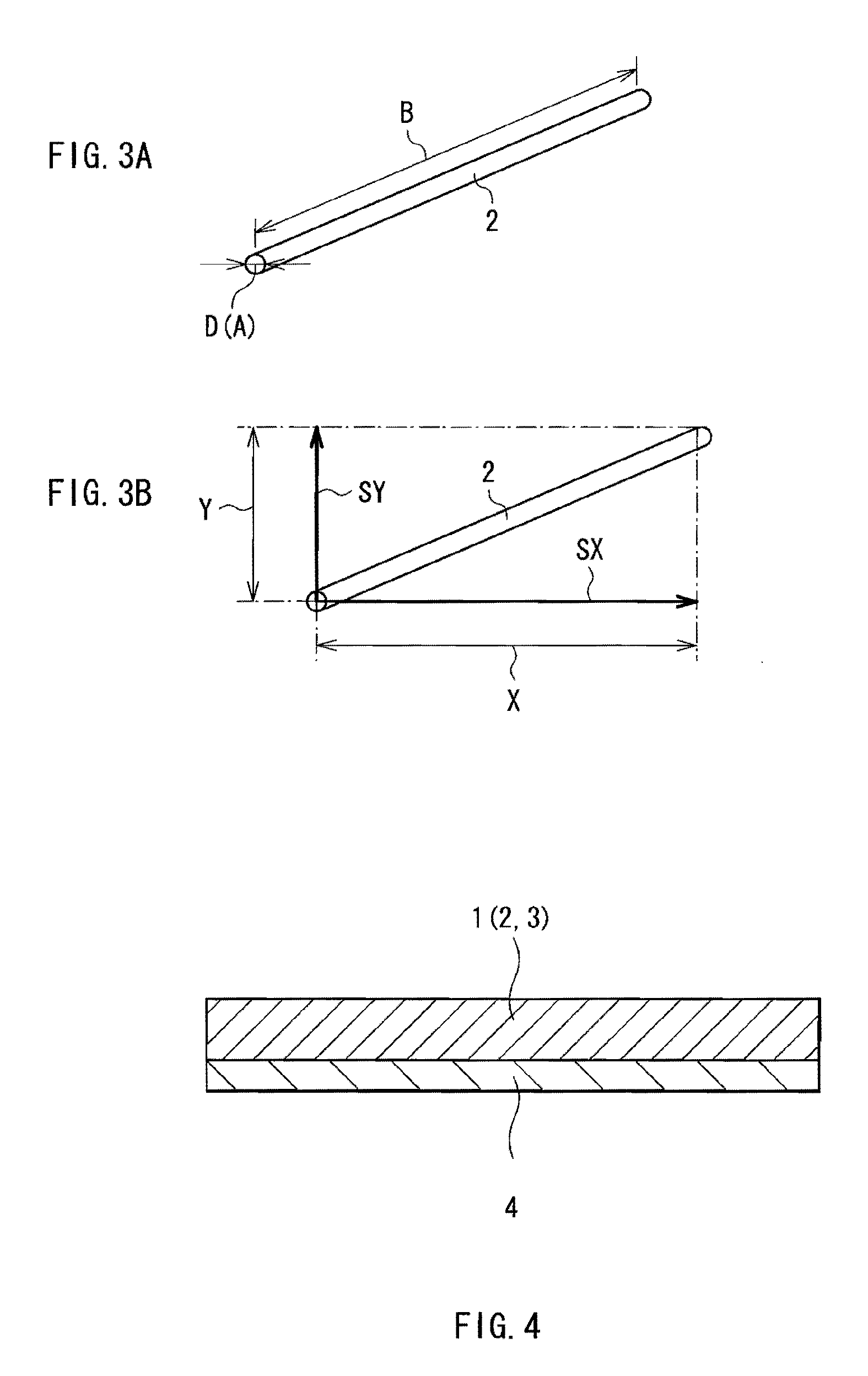Anode and secondary battery
a secondary battery and anode technology, applied in the direction of non-aqueous electrolyte cells, cell components, sustainable manufacturing/processing, etc., can solve the problems of difficult to obtain sufficient cycle characteristics only by using electrical conductors, and increase electric power consumption, so as to achieve easy lowering of cycle characteristics, high performance, and easy increase of electric power consumption
- Summary
- Abstract
- Description
- Claims
- Application Information
AI Technical Summary
Benefits of technology
Problems solved by technology
Method used
Image
Examples
example 1-1
[0179]The laminated film secondary battery illustrated in FIG. 9 and FIG. 10 was manufactured by the following procedure. At that time, the secondary battery was manufactured as a lithium ion secondary battery in which the capacity of the anode 54 was expressed based on insertion and extraction of lithium.
[0180]First, the cathode 53 was formed. First, lithium carbonate (Li2CO3) and cobalt carbonate (CoCO3) were mixed at a molar ratio of 0.5:1. After that, the mixture was fired in the air at 900 deg C. for 5 hours. Thereby, lithium cobalt complex oxide (LiCoO2) was obtained. Subsequently, 91 parts by mass of the lithium cobalt complex oxide as a cathode active material, 3 parts by mass of polyvinylidene fluoride as a cathode binder, and 6 parts by mass of graphite as a cathode electrical conductor were mixed to obtain a cathode mixture. After that, the cathode mixture was dispersed in N-methyl-2-pyrrolidone to obtain paste cathode mixture slurry. Finally, both faces of the cathode cu...
examples 1-2 to 1-9
[0185]A procedure was performed in the same manner as that of Example 1-1, except that as a component material of the metal fibers, titanium (Ti: Example 1-2), copper (Cu: Example 1-3), aluminum (Al: Example 1-4), zinc (Zn: Example 1-5), silver (Ag: Example 1-6), cobalt (Co: Example 1-7), nickel (Ni: Example 1-8), or chromium (Cr: Example 1-9) was used.
examples 2-1 to 2-13
[0194]A procedure was performed in the same manner as that of Example 1-1, except that the diameter D of the metal fibers was 0.1 μm (Example 2-1), 0.3 μm (Example 2-2), 0.5 μm (Example 2-3), 1 μm (Example 2-4), 2 μm (Example 2-5), 5 μm (Example 2-6), 10 μm (Example 2-7), 20 μm (Example 2-8), 30 μm (Example 2-9), 40 μm (Example 2-10), 50 μm (Example 2-11), 60 μm (Example 2-12), or 70 μm (Example 2-13).
[0195]The cycle characteristics for the secondary batteries of Examples 2-1 to 2-13 were examined. The results shown in Table 2 and FIG. 14 were obtained.
TABLE 2Anode active material: siliconAnodeactivematerialDischargeparticlescapacityAnodeMetal fiberMedianretentioncurrentDiameter DsizeAnoderatiocollectorType(μm)Ratio B / A(μm)binder(%)Example 2-1CuFe0.1155PI40Example 2-20.342Example 2-30.570Example 2-4172Example 2-5275Example 2-6578Example 2-71079Example 1-11580Example 2-82081Example 2-93082Example40822-10Example50822-11Example60822-12Example70822-13ComparativeCu———5PI32example 1
[0196]...
PUM
 Login to View More
Login to View More Abstract
Description
Claims
Application Information
 Login to View More
Login to View More - R&D
- Intellectual Property
- Life Sciences
- Materials
- Tech Scout
- Unparalleled Data Quality
- Higher Quality Content
- 60% Fewer Hallucinations
Browse by: Latest US Patents, China's latest patents, Technical Efficacy Thesaurus, Application Domain, Technology Topic, Popular Technical Reports.
© 2025 PatSnap. All rights reserved.Legal|Privacy policy|Modern Slavery Act Transparency Statement|Sitemap|About US| Contact US: help@patsnap.com



